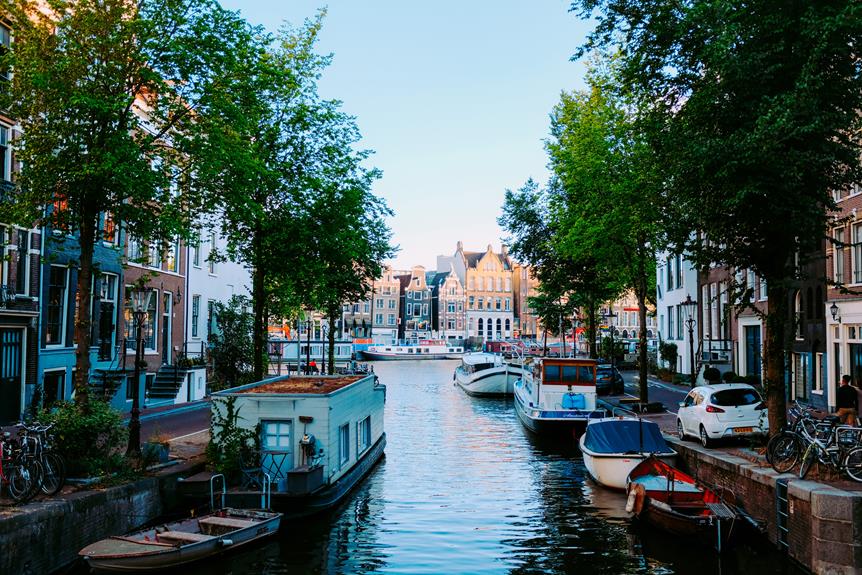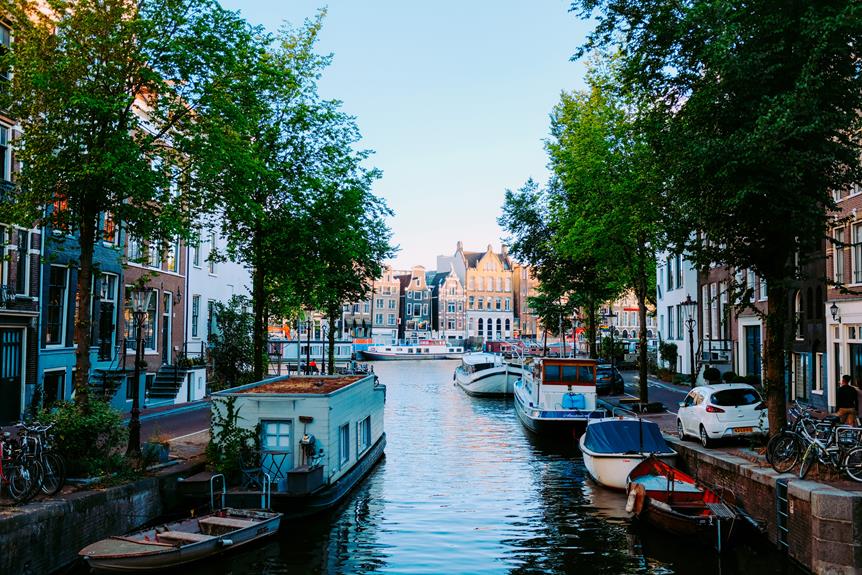Nestled in the northern part of Bangladesh, Dinajpur District stands as a testament to a bygone era, brimming with a rich historical legacy and a vibrant cultural tapestry. From its ancient origins dating back to the state of Pundravardhana to its pivotal role in pivotal events such as the Tebhaga movement and the War of Liberation in 1971, this district has witnessed the ebb and flow of history. But Dinajpur's allure goes beyond its historical significance, as it boasts a diverse population, thriving agriculture, and a robust educational system. So, come along as we explore the captivating tales and hidden gems that make Dinajpur District a treasure trove of heritage and culture.
Ancient Origins and Historical Significance
Dinajpur District in Bangladesh holds ancient origins and a rich historical significance that can be traced back to its existence as part of the ancient state of Pundravardhana. The district has been witness to various significant events and developments throughout history. One noteworthy aspect is the discovery of Gupta era artifacts in the region. An ancient engraved stone from this era was found near Sura Masjid, providing valuable insights into the art and culture of that time. Additionally, Dinajpur played a crucial role in the Tebhaga movement, a significant peasant uprising in Bengal during the 1940s. The district's involvement in this movement showcased the strong agrarian community and their struggle for fair land distribution and better working conditions. These historical elements highlight the cultural and socio-political importance of Dinajpur District in Bangladesh.
British Colonial Influence and Administrative Changes
During the era of British colonial rule, Dinajpur District underwent significant administrative changes and experienced the influence of British governance. Under British colonial governance, the district saw the establishment of administrative control in 1786. One of the major changes brought about by the British was the introduction of indigo plantation in the district in the late 18th century. This had a profound impact on the local economy and led to changes in land ownership and agricultural practices. The British also implemented administrative reforms, such as the formation of the first municipality in Dinajpur in 1856 and the appointment of a chairman for the municipality in 1868. These changes reshaped the district's governance and laid the foundation for future developments. The legacy of British colonial influence can still be seen in the administrative structure and historical landmarks of Dinajpur District today.
Landmarks and Historical Sites
The district of Dinajpur in Bangladesh is home to several significant landmarks and historical sites that showcase its rich history and cultural heritage. One of the architectural treasures in Dinajpur is the Kantajew Temple, also known as the Kantanagar Temple. Built in the late 18th century, this stunning terracotta temple is dedicated to Lord Krishna and features intricate carvings and sculptures. Another notable landmark is the Ramsagar Lake, an artificial lake built in the 18th century. It is a popular tourist spot and provides a serene setting for boating and picnicking. These historical sites not only preserve the region's heritage but also have a significant impact on tourism in Dinajpur, attracting visitors from both Bangladesh and abroad. The presence of these landmarks contributes to the cultural and economic development of the district.
Geographical Features and Climate
Nestled in the northern part of Bangladesh, Dinajpur District boasts diverse geographical features and a tropical climate that contribute to its unique charm and appeal.
- Geographical Features:
- The district is mainly flat with some low-lying areas, offering picturesque landscapes.
- It is home to several rivers, including the Dhepa, Punarbhaba, and Atrai, which add to the natural beauty of the region.
- Climate:
- Dinajpur experiences a hot, wet, and humid tropical climate.
- The annual average temperature ranges from 25 to 35 degrees Celsius, providing favorable conditions for agriculture.
- The district receives abundant rainfall, supporting the cultivation of crops like rice, wheat, jute, and sugarcane.
These geographical features and climate have not only shaped the ancient origins and historical significance of Dinajpur but also influenced its British colonial past, administrative changes, and development as a district. Moreover, they have played a vital role in the district's population growth, ethnic diversity, agriculture-based economy, including its famous mango orchards and agro-based industries. Additionally, the commercial hubs and vibrant trade in the district have flourished due to its favorable geographical location. The education system, institutions, and cultural heritage of Dinajpur are also influenced by its geographical features and climate, making it a place of rich traditions and festivals.
Population and Ethnic Diversity
The unique geographical features and climate of Dinajpur District have fostered a diverse population and ethnic composition, shaping the social fabric and cultural tapestry of the region. The district has experienced significant population growth over the years, with an estimated population of approximately 3.5 million. The majority of the population in Dinajpur is engaged in agriculture as their primary occupation, reflecting the district's agrarian economy. The ethnic diversity of Dinajpur is evident in the presence of various communities, including Bengali, Santal, and Rajbangshi. These communities contribute to the vibrant cultural landscape of the district, preserving and practicing their traditional customs and rituals. Dinajpur is a melting pot of different ethnicities, religions, and traditions, creating a rich and diverse cultural heritage that is celebrated and cherished by its inhabitants.
Agriculture: Backbone of the Economy
Agriculture in Dinajpur District serves as the backbone of its economy, providing sustenance and livelihood for the majority of its population. The importance of irrigation in agricultural practices cannot be overstated. With the district's flat topography and hot tropical climate, irrigation plays a critical role in ensuring the success of crops. Farmers in Dinajpur face various challenges in the agricultural sector. Limited access to modern farming technology and techniques hinders productivity. Additionally, unpredictable weather patterns and natural disasters pose a constant threat to their crops. Lack of financial resources and limited market access also affect the profitability of their produce. Despite these challenges, the farmers of Dinajpur continue to persevere, relying on their traditional knowledge and resilience to sustain their agricultural practices and contribute to the district's economy.
Mango Orchards and Agro-based Industries
With the agricultural sector serving as the backbone of Dinajpur District's economy, it is crucial to explore the significant role played by mango orchards and agro-based industries in sustaining and diversifying the district's agricultural activities. Mango orchards in Dinajpur have a substantial economic impact, as they contribute to both domestic and international markets. The district is known for producing high-quality mangoes, attracting buyers from far and wide. Agro-based industries, such as rice mills and sugar mills, also play a vital role in the district's economy by adding value to agricultural products and creating employment opportunities. Moreover, efforts are being made to preserve and promote the mango orchards and agro-based industries in Dinajpur. These preservation efforts include providing technical support to farmers, implementing sustainable farming practices, and promoting organic farming methods. By ensuring the sustainability and growth of mango orchards and agro-based industries, Dinajpur District can further strengthen its agricultural sector and contribute to the overall development of the region.
Commercial Hubs and Trade
Dinajpur District serves as a bustling hub for commercial activities and trade, contributing significantly to the district's economic growth and development. The economic impact of these commercial hubs is evident in the flourishing trade networks and the increased revenue generated for the local economy. The evolution of trade in Dinajpur District has been a result of various factors such as improved infrastructure, technological advancements, and the availability of resources. The district's strategic location, bordering India, has also played a crucial role in facilitating cross-border trade and attracting both domestic and international investors. As a result, a wide range of products and services are available in the commercial hubs, catering to the diverse needs and preferences of the residents. These vibrant commercial hubs not only provide employment opportunities but also create a vibrant atmosphere that promotes economic prosperity and social interactions.
Education System and Institutions
The flourishing trade networks and vibrant commercial hubs in Dinajpur District have not only contributed to the district's economic growth, but they have also fostered a well-established education system with numerous educational institutions. The education system in Dinajpur is comprehensive, catering to the needs of students from primary to higher education levels. The district is home to Dinajpur Medical College, which is one of the prestigious medical colleges in Bangladesh. In recent years, there have been significant educational reforms in Dinajpur, with a focus on improving the quality of education and expanding access to education for all. Efforts have been made to promote women's education, ensuring equal opportunities for girls to receive education. These reforms aim to empower individuals through education and contribute to the overall development of the district.
Cultural Heritage and Festivals
Cultural heritage and festivals in Dinajpur District showcase a vibrant tapestry of traditions, customs, and celebrations that have been passed down through generations. The district is rich in cultural traditions, with its residents valuing their heritage and preserving it with pride. The festivals celebrated in Dinajpur are a testament to the community's deep-rooted connection to their cultural roots. These festivals bring people together, fostering a sense of unity and belonging. They serve as a platform for showcasing traditional crafts, highlighting the craftsmanship and skill of the local artisans. The intricate designs and vibrant colors of these traditional crafts reflect the district's cultural identity and are a source of inspiration for future generations. The cultural heritage and festivals in Dinajpur District not only celebrate the past but also provide a platform for the continued growth and evolution of its cultural traditions.
Frequently Asked Questions
What Are Some Notable Archaeological Discoveries in Dinajpur District?
Notable archaeological discoveries in Dinajpur district include an ancient engraved stone from the Gupta era near Sura Masjid, the Mahasthangarh ruins, and the Kantajew Temple. These findings provide insights into the rich cultural heritage of Dinajpur. The Mahasthangarh ruins, in particular, are of great historical significance, as they represent one of the earliest urban archaeological sites in Bangladesh. The Kantajew Temple, known for its intricate terracotta artwork, showcases the architectural prowess of the region. These discoveries highlight the deep-rooted history and vibrant culture of Dinajpur district.
How Did British Colonial Rule Impact the Development of Dinajpur District?
British colonial rule had a significant impact on the development of Dinajpur district. The establishment of British administrative control in 1786 marked the beginning of a new era. The district became a major center for indigo plantation, which contributed to its economic growth. During the colonial period, Dinajpur became the largest administrative district in undivided Bengal, encompassing a significant portion of neighboring regions. This period also witnessed the formation of the first municipality in 1856, further facilitating the district's development.
What Are Some of the Significant Landmarks and Historical Sites in the District?
Some of the significant landmarks and historical sites in Dinajpur District include the Ramsagar Lake, Kantajew Temple, and Mahasthangarh ruins. The Ramsagar Lake is a man-made lake known for its scenic beauty and historical importance. The Kantajew Temple is a magnificent Hindu temple renowned for its terracotta artwork. The Mahasthangarh ruins are an ancient archaeological site that dates back to the 3rd century BCE and is considered one of the earliest urban archaeological sites in Bangladesh. These landmarks and sites offer a glimpse into the rich history and vibrant culture of the district.
What Are the Main Geographical Features of Dinajpur District and What Is Its Climate Like?
Dinajpur District, located in the northern part of Bangladesh, boasts diverse geographical features and a tropical climate. The district covers approximately 3,437 square kilometers, with mainly flat topography and some low-lying areas. It is bordered by India to the west and has major rivers like Dhepa, Punarbhaba, and Atrai. Dinajpur experiences a hot, wet, and humid tropical climate. These geographical features, coupled with the district's rich history and vibrant culture, make Dinajpur a fascinating destination for exploration and appreciation.
What Is the Ethnic Composition of Dinajpur District and What Are the Major Religions Practiced in the Area?
The ethnic composition of Dinajpur District is diverse, with the majority of the population being Bengali. However, there are also significant populations of Santal and Rajbangshi communities in the district. In terms of religious practices, Islam is the predominant religion followed by the majority of the population. Hinduism and Buddhism are also practiced by a significant number of people in the area. The district's ethnic and religious diversity contributes to the vibrant cultural heritage of Dinajpur.





